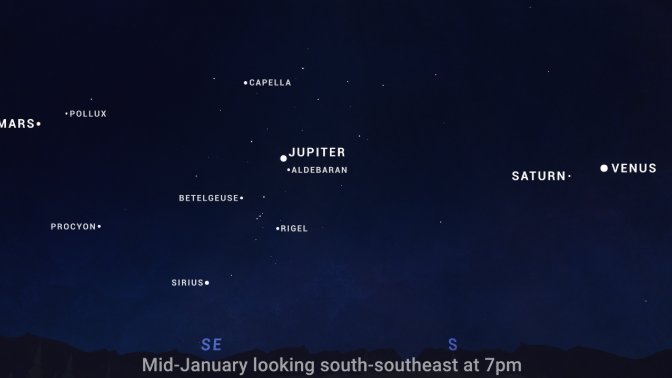

Bhubaneswar: The country will be celebrating its 76th Republic Day on January 26 this year. A scintillating parade – march past and air show – will dominate the ground and skies on the all –important day for the country.
However, ahead of the Republic Day parade, don’t miss the most breathtaking astronomical events of the year.
This January, six of the seven planets in our solar system will be visible at the same time, as if they are undertaking a parade in the sky.
The six planets who will be on some sort of a parade are Venus, Mars, Jupiter, Saturn, Neptune and Uranus. The six planets will be visible in the days leading up to Jan. 21, 2025, reports NASA Jan 2025 Skywatch.
PLANET PARADE
Though the official term is “planetary alignment”, it is termed as planet parade for the following reason.
As per scientific observations, since the planets line up on the same side of the Sun all right next to each other, therefore the term Planet Parade coined.
However the truth is, the planets can never fully line up exactly, but they can all be on the same side of the Sun and relatively close to lining up.
Even as the planets are visible as if they are near to each other, the home truth is these planets may be nowhere near each other in their solar orbits but are visible so from the Earth or say from the earth’s frame of view, the planets look near to each other.
The 2025 Planet parade will be lit up the night sky from Jan 8 to February last week.
PLANET PARADE SEEN IN NAKED EYE?
As per NASA report, Venus, Mars, Jupiter, and Saturn will be easy to spot with the naked eye.
The NASA report says, although the planets are already visible in the night sky, the best part of the planet parade has begun from January 8.
In order to spot Neptune and Uranus, one needs a high-powered viewing device like a telescope, the report added.
However, NASA report added that it is best seen with binoculars, telescopes in areas with minimal light pollution.
BEST TIME FOR PARADE SHOW
As per the NASA January report, the best time to view the planets from the Northern Hemisphere will be just after sunset at around 8:30 p.m. local time.
It says, “You still might be able to catch Venus, Saturn and Neptune on the horizon after that, but all three planets will be under the horizon by 11:30 p.m. to midnight depending on your location. After that, Mars, Jupiter and Uranus will remain visible for a few more hours with Mars finally setting just before sunrise.”
WHERE TO LOOK?
Shortly after sunset, turn your glance to the south-southeast horizon of the sky and watch the stunning planetary parade show. It will be best visible by 8:30 pm, when waxing moon will be seen shining alongside the brightest planet Venus and Saturn
As per NASA report, January 17-18 – will bring Venus and Saturn conjunction on the sky: though over a couple of weeks, the two planets have come within just a couple of finger widths' distance apart in the sky (about 2 degrees), they're at their closest on the 17th and 18th.
NASA report says the following.